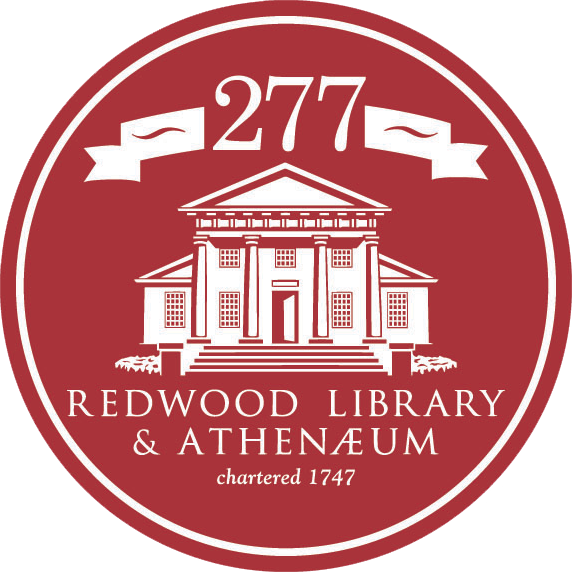This past Wednesday, February 7th, we held our first Redwood Treasures event of the year. Out on display were books, objects, and manuscripts from all periods, generously given to the library throughout our history. They included examples of the 18th century history of Newport, printing history from the age of incunabulum through the 19th century, and the fascination early members had with understanding the world, the arts, and religion. If you missed the event, today we are presenting a brief round-up of some of the highlights and we’ll leave you with a promise that we will hold another Redwood Treasures event soon!
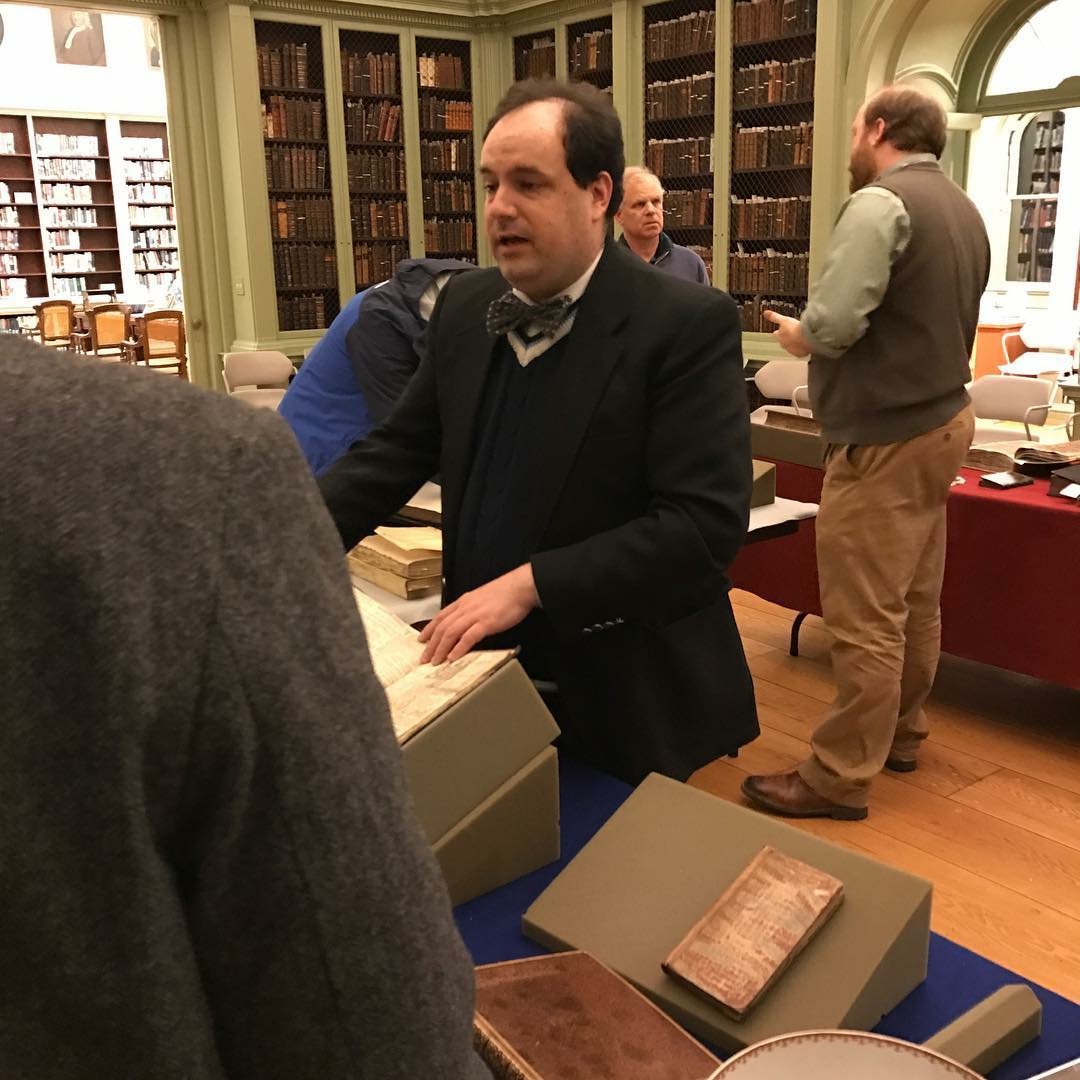
Newport history has so many rich stories and sometimes some of our best pieces feature stories told by people living just outside of Newport. Such is the case with the diaries of Thomas Benjamin Hazard, affectionately known as Nailor Tom. The diaries he kept from 1778-1840 capture vignettes of a life lived in Rhode Island in the late 18th and early 19th century. Even though he lived in Kingston, he frequently went into Newport and as the grandson of our founder, Abraham Redwood, he was always connected to the city.
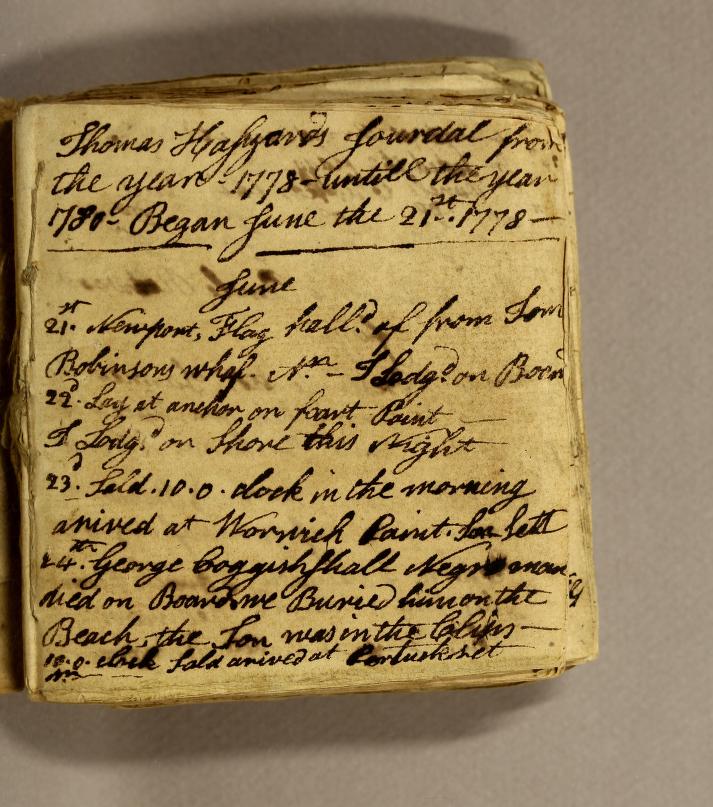
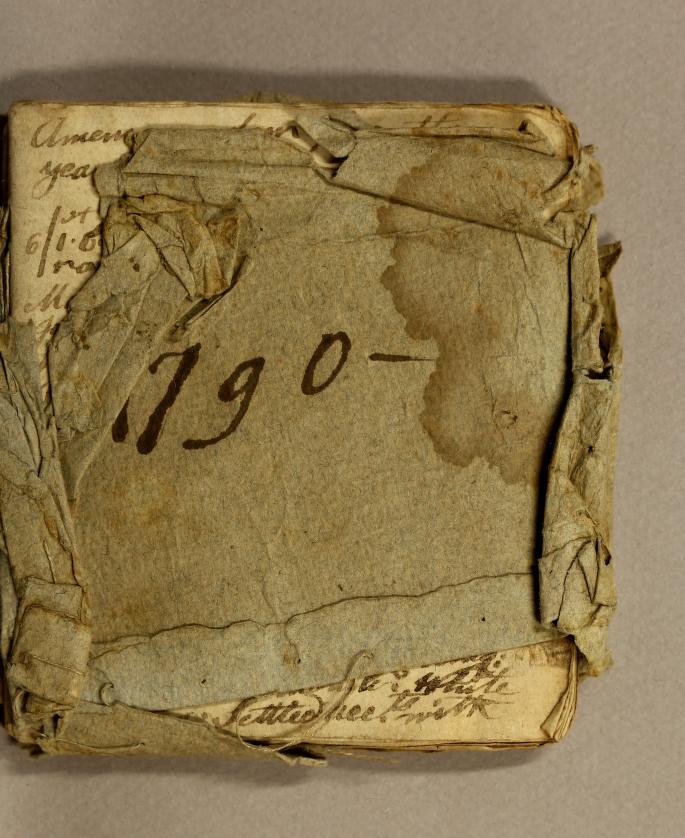
On the same table, the punch bowl from last week’s blog post made its appearance. The gift of Ellen Townsend, the punch bowl was a symbol of consumption and social interaction in early America and abroad. To learn more and view images of the inside of the bowl, visit our last blog!

This tour through the 18th century was rounded out with the Newport Gazette, 1777-1778, printed by John Howe, An Examination of Mr. Pope’s Essay on Man, 1739, by Jean-Pierre de Crousaz, The Beggar’s Opera, 1729, by John Gay, and A Complete Treatise on Perspective, 1776, by Thomas Malton, which was given to Jane Stuart by her father, Gilbert Stuart, both artists with works at the Redwood Library.

Our examination of printing history began with two items from the 15th century. The first was our medieval Book of Hours, Hours of the Blessed Virgin Mary, handwritten and illuminated on vellum by the Masters of the Golden Scrolls, a group working in Bruges around the year 1440. The vivid illuminations are still incredibly rich and even the text itself is a work of art. This manuscript dates prior to the invention of printing in the west, but it does not suffer for it.
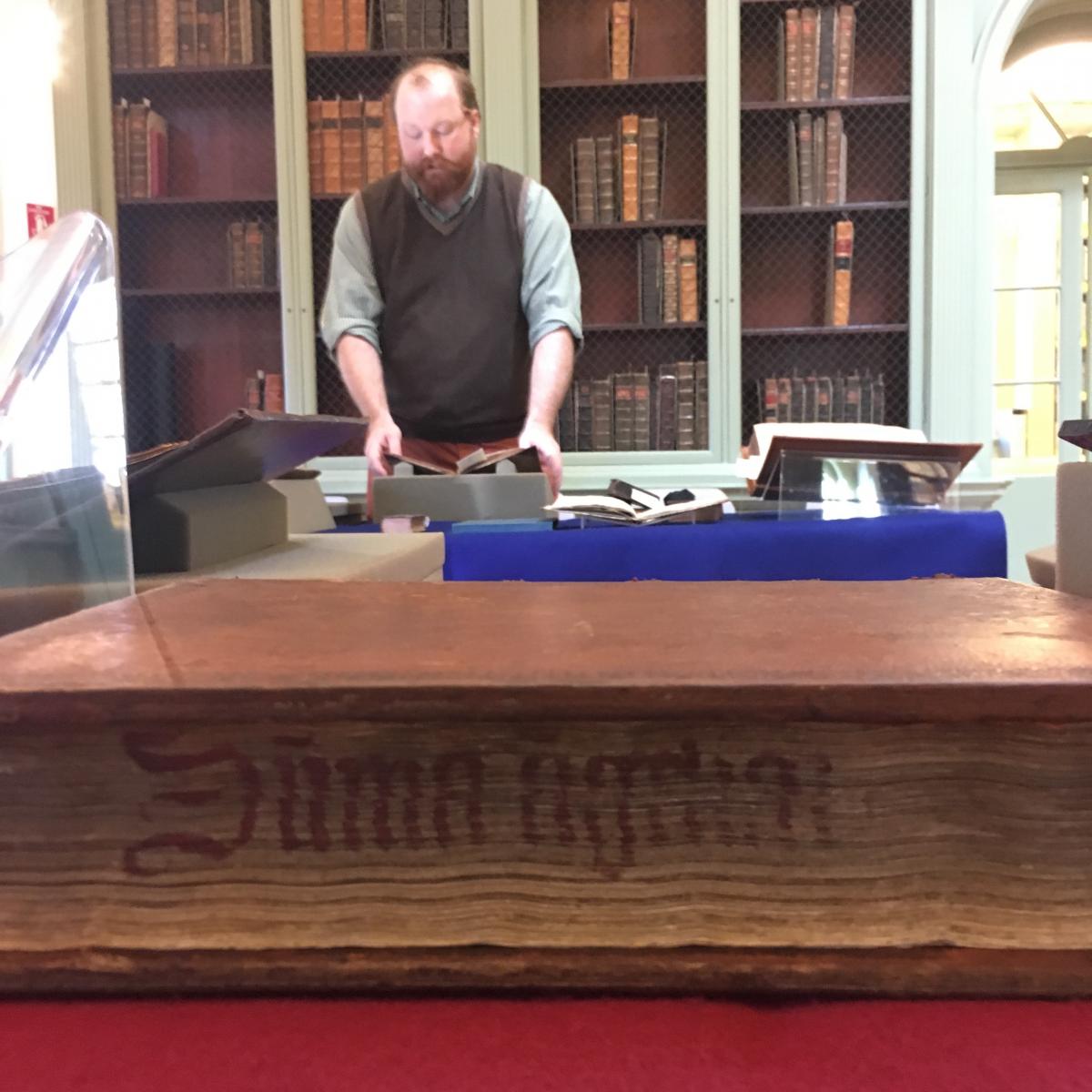
The first generation of western printing dates to the mid 1400s and extends to include any book printed before 1501. These books are known as incunables or incunabula. In Latin, the term means “in the cradle” and refers to books printed in the infancy of book printing in the west. The Redwood Library holds six incunabula and we brought one out to demonstrate the beginning of printing history in our collection. This book, Summa angelica de casibus conscientiae, 1490, is a dictionary of religious terms, relating to sins and morality. Of interest is the way that the title of the book is printed along the long edge of the pages, which shows us how this book would have likely sat flat on a shelf with the pages facing outward. From the incunabulum, our printing history moved through Catullus, Tibullus, Propertius, 1502, printed by Aldus Manutius in Venice, Pindar’s Olympia, Pythia, Nemea, 1513, printed at the same house, Tutte l’opere d’architettura, et prospettiva, 1619, by Sebastiano Serlio and also printed in Venice, China Monumentis, 1667, printed in Antwerp, The Recuyell of the Historyes of Troye, 1892, printed by the Kelmscott Press, and finally The Instruments of Writing printed in Newport in 1948.
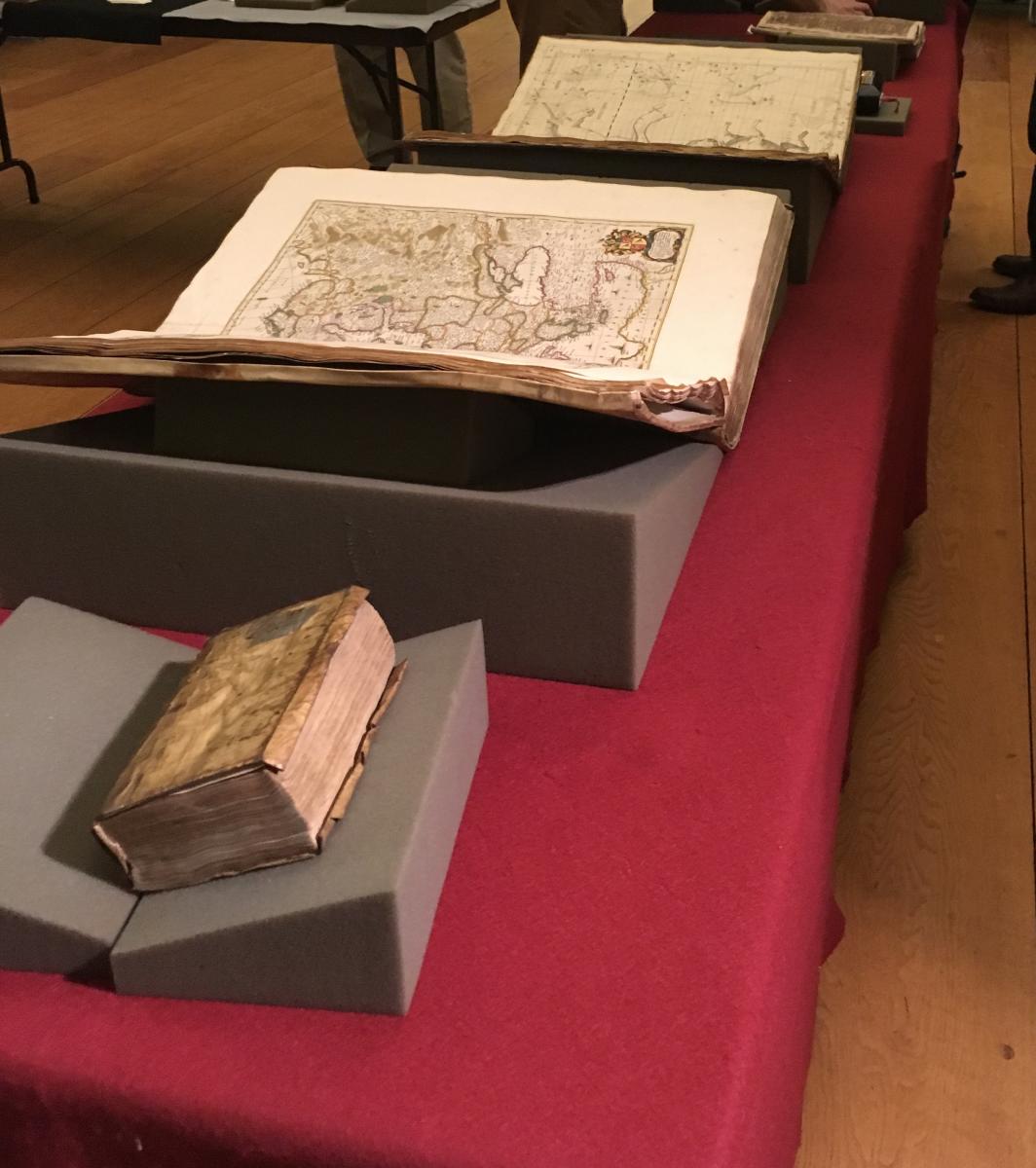
Our final table examined several themes. The exploration and diagramming of the world included two atlases of the world, La Geografia di Clavdio Ptolomeo Alessandrino, 1548, with maps by Italian cartographer Giacomo Gastaldi, and The English Atlas, Vol. 1, printed in 1680, as well as the Atlas Coelstis, 1729, which mapped the stars.
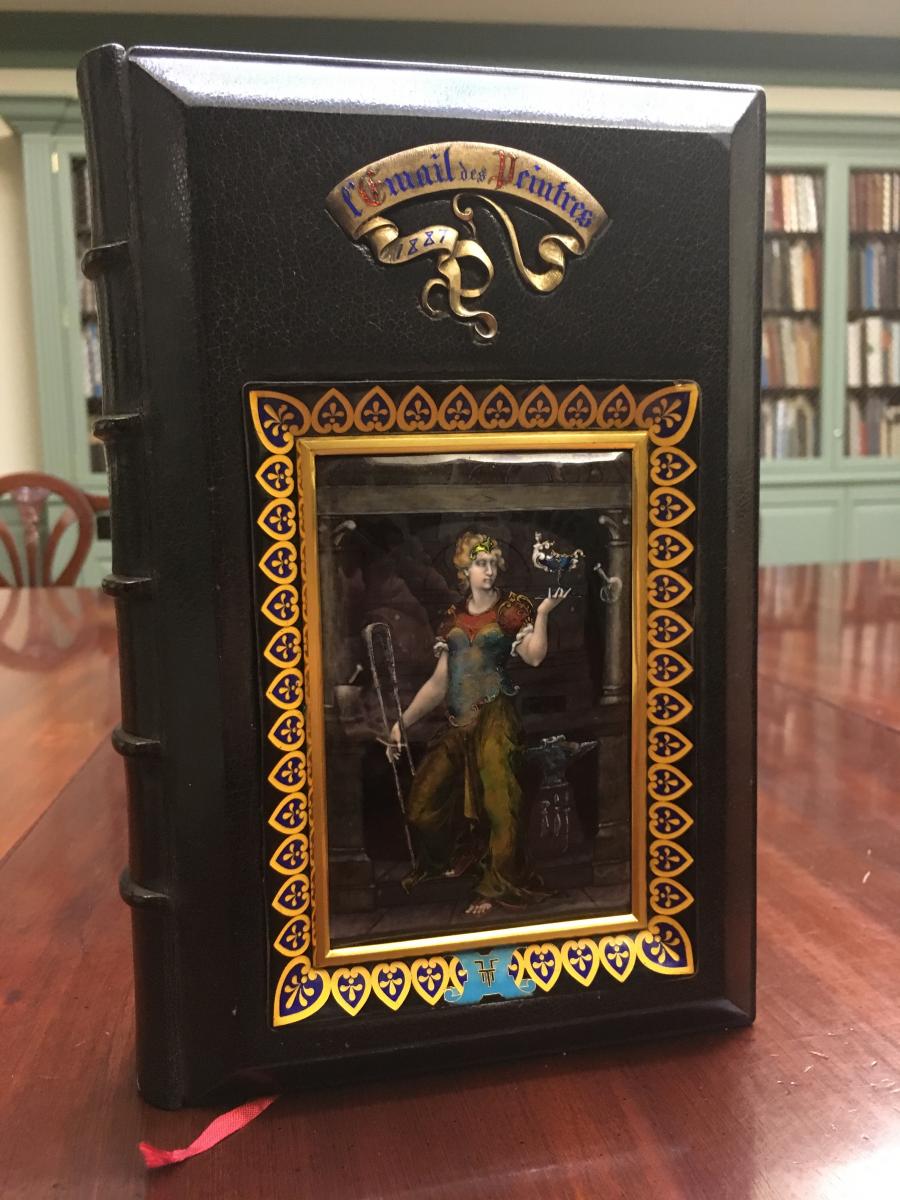
On the subject of arts, the Redwood’s collection holds several technical manuals, like the work on perspective given to Jane Stuart. Another on display was L’Email des Peintres, 1866, by Claudius Popelin. This instructional book describes the techniques involved in enamel painting and the binding on our copy has its own example built into the cover. The binding was done by the Joly house in France at the request of Samuel Putnam Avery and includes an enamel painting done by Frances Thesmar, a successor to Popelin. The book is incredibly heavy, weighted down by the binding and vellum pages, but it is a beautiful work of art in itself.

For religious exploration and introspection, we pulled out two of our favorite manuscripts. The first, written by Dorothy Calthorpe in 1674, features a story called A Castle in the Aire or the Pallace of the Man in the Moon. It follows her as she climbs a ladder up to the heavens, sees the beauty and splendor of heaven and witnesses the old Roman gods pass by her, and then receives a lesson in Christian humility from her guide before agreeing to return home. Towards the end of the volume are two additional poems written by Calthorpe in her unique handwriting, occasionally written in gold, such as in the image above. Also on display were two other technical art volumes, Polygraphice: In three books, 1672, and Polygraphice: In seven books, 1685, and another religious manuscript written by Edward Taylor, grandfather of Redwood Librarian Ezra Stiles, who wrote the Harmony of the Gospels between 1680-1720.

All of the materials that were on display are available for closer inspection by reference appointment and there will be even more treasures on display soon. If you would like us to find something particular for our next showing, let us know! We’d love to know what people are interested in seeing and welcome all to join us in the future!

